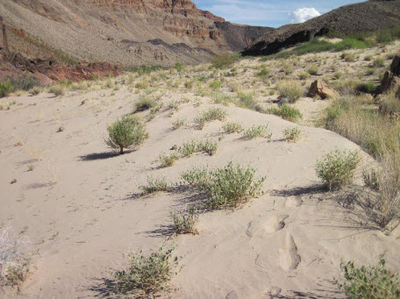Difference between revisions of "Aeolian Sand Transport"
From Glen Canyon Dam AMP
Cellsworth (Talk | contribs) |
Cellsworth (Talk | contribs) |
||
| Line 79: | Line 79: | ||
'''2019''' | '''2019''' | ||
*[https://doi.org/10.3133/fs20193054 Cook et. al, 2019, Managing sand along the Colorado River to protect cultural sites downstream of Glen Canyon Dam: U.S. Geological Survey Fact Sheet 2019-3054] | *[https://doi.org/10.3133/fs20193054 Cook et. al, 2019, Managing sand along the Colorado River to protect cultural sites downstream of Glen Canyon Dam: U.S. Geological Survey Fact Sheet 2019-3054] | ||
| + | *[https://www.usbr.gov/uc/progact/amp/twg/2019-03-14-twg-meeting/20190314-HighElevationSandCulturalSites-Presentation-508-UCRO.pdf High Elevation Sand/Cultural Sites: The response of source-bordering aeolian dunefields to the 2012-2016 High Flow Experiments of the Colorado River in Grand Canyon Presentation ] | ||
'''2018''' | '''2018''' | ||
Revision as of 18:12, 26 February 2020
|
|
Aeolian Sand TransportSand can potentially help preserve archaeological features by direct burial and/or by mitigating gullying and other erosion. Sand can be deposited on archaeological features or within gullies via fluvial (river) or aeolian (wind) deposition. Most archaeological sites are above the highest contemporary river stage, so aeolian deposition is the most likely mechanism for preservation and/or erosion mitigation. River-sourced sand deposition is a time-dependent process, and the outer limit of that process may extend for many years after any individual HFE. Additionally, HFEs with targeted vegetation removal could produce a net sediment surplus at some sites. [1] |
| --- |
--- |
--- |
|---|


